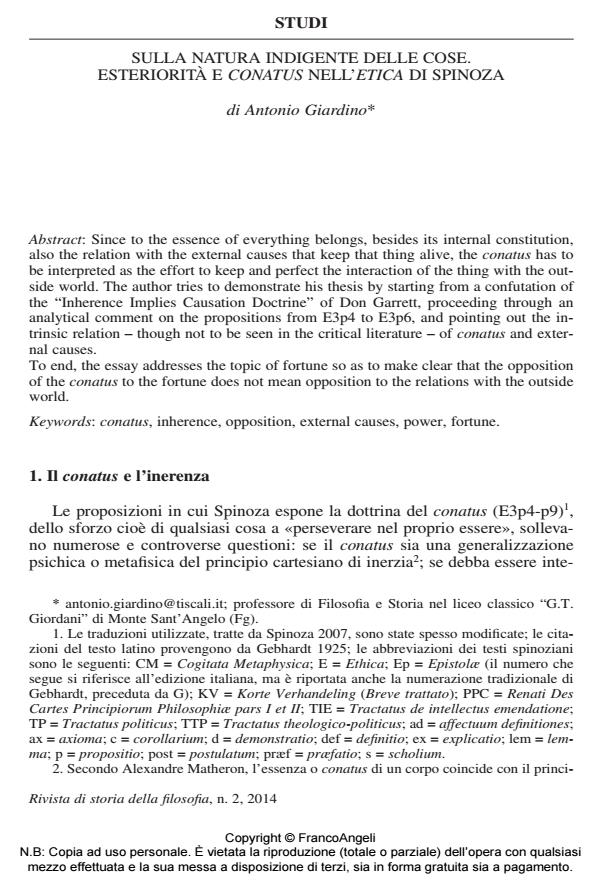Sulla natura indigente delle cose. Esteriorità e conatus nell’Etica di Spinoza
Journal title RIVISTA DI STORIA DELLA FILOSOFIA
Author/s Antonio Giardino
Publishing Year 2014 Issue 2014/2
Language Italian Pages 30 P. 275-304 File size 636 KB
DOI 10.3280/SF2014-002008
DOI is like a bar code for intellectual property: to have more infomation
click here
Below, you can see the article first page
If you want to buy this article in PDF format, you can do it, following the instructions to buy download credits

FrancoAngeli is member of Publishers International Linking Association, Inc (PILA), a not-for-profit association which run the CrossRef service enabling links to and from online scholarly content.
Since to the essence of everything belongs, besides its internal constitution, also the relation with the external causes that keep that thing alive, the conatus has to be interpreted as the effort to keep and perfect the interaction of the thing with the outside world. The author tries to demonstrate his thesis by starting from a confutation of the "Inherence Implies Causation Doctrine" of Don Garrett, proceeding through an analytical comment on the propositions from E3p4 to E3p6, and pointing out the intrinsic relation - though not to be seen in the critical literature - of conatus and external causes. To end, the essay addresses the topic of fortune so as to make clear that the opposition of the conatus to the fortune does not mean opposition to the relations with the outside world. .
Keywords: Conatus, inherence, opposition, external causes, power, fortune
Antonio Giardino, Sulla natura indigente delle cose. Esteriorità e conatus nell’Etica di Spinoza in "RIVISTA DI STORIA DELLA FILOSOFIA" 2/2014, pp 275-304, DOI: 10.3280/SF2014-002008